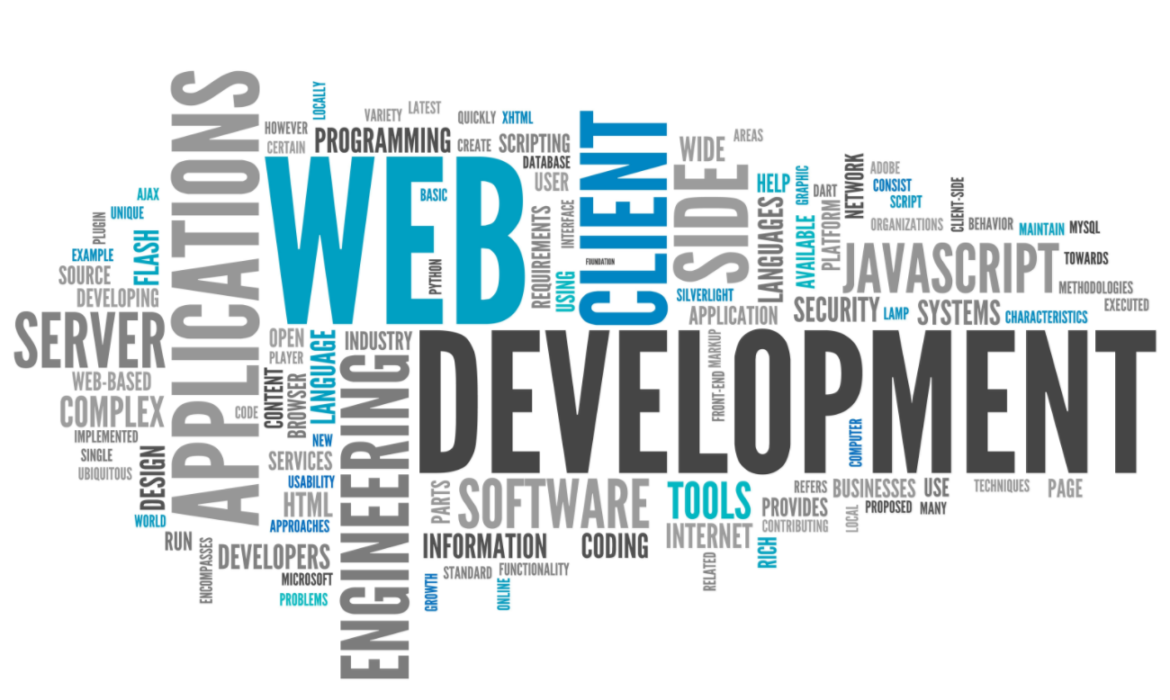Choosing the Right Programming Languages for Web Development: A Comprehensive Guide
Введение
The realm of web development is a vibrant tapestry woven from a multitude of programming languages, each with its unique strengths and characteristics. Selecting the right languages for your web development projects is crucial for ensuring efficiency, maintainability, and scalability. This guide delves into the factors to consider when making these critical choices.
Front-End vs. Back-End Development: Language Considerations
Front-End Development: Focuses on the user-facing aspects of a website, primarily utilizing languages like:
HTML: The foundation of web pages, defining content and structure.
CSS: Controls the visual presentation, including colors, fonts, and layouts.
JavaScript: Adds interactivity, animations, and dynamic behavior.
Back-End Development: Handles server-side logic and functionality, commonly employing languages like:
Python: Versatile and beginner-friendly, with frameworks like Django and Flask.
Java: Robust and scalable, popular for enterprise applications.
PHP: Widely used for dynamic websites and content management systems (CMS).
JavaScript: Node.js enables back-end development using JavaScript.
Full-Stack Development: Encompasses both front-end and back-end expertise, often utilizing languages like:
JavaScript: Frameworks like React, Angular, and Vue.js provide a unified front-end and back-end approach.
Python: Django and Flask offer full-stack capabilities.
Factors Influencing Programming Language Choice
Project Requirements: Consider the project’s nature, complexity, and performance demands.
Developer Skills and Experience: Choose languages that align with your existing skills and comfort level.
Language Popularity and Community Support: Popular languages often have extensive documentation, libraries, and community support.
Learning Resources: Ensure the availability of learning resources, tutorials, and online courses for the chosen languages.
Popular Programming Languages for Web Development
Front-End Languages
HTML: Essential for all web development projects.
CSS: Versatility and widespread adoption make it a must-have.
JavaScript: Interactive web experiences and dynamic user interfaces.
Back-End Languages
Python: Beginner-friendly, versatile, and widely used.
Java: Robust, scalable, and popular for enterprise applications.
PHP: Mature language, ideal for dynamic websites and CMS.
JavaScript: Node.js enables back-end development using JavaScript.
Full-Stack Languages
JavaScript: Frameworks like React, Angular, and Vue.js offer a unified approach.
Python: Django and Flask provide full-stack capabilities.
Заключение
Choosing the right programming languages for web development is an informed decision that considers project requirements, developer skills, language popularity, and available resources. By carefully evaluating these factors, you can select the languages that empower you to build high-quality, performant, and maintainable web applications. Помнить, the web development landscape is constantly evolving, so stay updated on emerging languages and technologies to enhance your skillset and expand your development horizons.
Призыв к действию:
Ready to embark on your web development journey with the right programming languages?
Our team of experienced web developers can guide you through the language selection process, taking into account your project’s specific needs and your personal preferences. We’ll help you assess your skillset, identify suitable languages, and provide personalized learning recommendations to ensure you have the right tools to succeed in the ever-evolving world of web development. Contact us today to unlock your web development potential!
Web Development Basics: A Comprehensive Guide for Beginners
Introduction to Web Development
Web development encompasses the skills and techniques involved in creating and maintaining websites. It’s a dynamic and ever-evolving field that encompasses a wide range of tasks, from designing user interfaces to building complex web applications.
Essential Web Development Languages
Three core languages form the foundation of web development:
HTML (HyperText Markup Language): Defines the structure and content of web pages using tags and elements.
CSS (Cascading Style Sheets): Controls the visual presentation of web pages, including colors, fonts, and layouts.
JavaScript: Adds interactivity and dynamic behavior to web pages, enabling user actions and animations.
Фронтенд и бэкенд разработка
Web development can be broadly divided into two main areas:
Front-End Development: Focuses on the user-facing aspects of a website, including the design, layout, and interactivity.
Back-End Development: Deals with the server-side logic and functionality of a website, handling data storage, user authentication, and communication with databases.
Full-Stack Development
Full-stack developers possess expertise in both front-end and back-end development, enabling them to build complete web applications from scratch.
Building a Website: A Step-by-Step Guide
Planning and Design: Define your website’s purpose, target audience, and desired features. Create wireframes and mockups to visualize the layout and design.
HTML Structure: Start by creating the basic HTML structure of your website, defining the main sections, headings, and content elements.
CSS Styling: Apply CSS styles to enhance the visual appearance of your website, including colors, fonts, layouts, and responsiveness.
JavaScript Interactivity: Add JavaScript code to introduce dynamic elements, such as user interactions, animations, and form validation.
Testing and Deployment: Thoroughly test your website across different browsers and devices before deploying it to a live server.
Resources for Learning Web Development
Online Tutorials: Numerous online tutorials and courses offer a structured approach to learning web development basics.
Interactive Coding Platforms: Practice coding in real-time using interactive platforms that provide feedback and challenges.
Books and Documentation: Refer to comprehensive books and official documentation to gain in-depth knowledge of web development concepts.
Online Communities: Engage with online communities of web developers to seek guidance, share knowledge, and collaborate on projects.
Заключение
Web development offers a rewarding and challenging career path, enabling you to create innovative and impactful digital experiences. By mastering the fundamentals of HTML, CSS, and JavaScript, you’ll lay the groundwork for a successful journey into the world of web development. Remember, web development is a continuous learning process, so stay curious, explore new technologies, and never stop expanding your skillset.
Призыв к действию:
Ready to embark on your web development journey and build your first website?
Our team of experienced web developers can guide you through the process, providing personalized instruction and support tailored to your learning style. We’ll help you grasp the essential concepts, develop hands-on coding skills, and create a website that showcases your newfound knowledge and creativity. Contact us today to take the first step towards becoming a proficient web developer!







